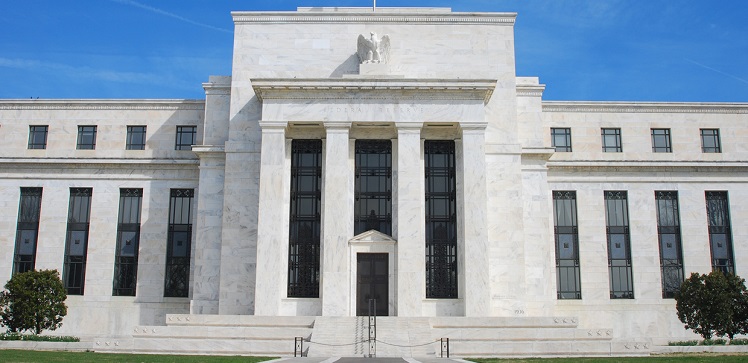Articles
Regulators Signal Libor’s End in the U.S.
- By Andrew Deichler
- Published: 12/1/2020

The Federal Reserve Board, Federal Deposit Insurance Corporation (FDIC) and Office of the Comptroller of the Currency (OCC) issued a joint statement Monday, urging banks to cease entering into new contracts that use U.S. dollar Libor as a reference rate.
Though banks have until December 31, 2021 to refrain from using Libor, the FFIEC asked banks to stop referencing it as soon as possible. The agencies noted that new financial contracts should either utilize a reference rate other than Libor or have robust fallback language that includes a clearly defined alternative reference rate after Libor’s discontinuation.
The move immediately followed an announcement by the ICE Benchmark Administration (IBA) that it would be consulting in early December on its intention to cease the publication of one-week and two-month USD Libor settings by the end of 2021, with the remaining Libor settings ending on June 30, 2023. The news comes less than two weeks after IBA announced consultations for its cessation plans for euro, sterling, Swiss franc and yen-based Libor.
Even with the slightly extended deadline for certain Libor tenors, these actions by three key members of the Federal Financial Institutions Examination Council (FFIEC) and Libor’s administrator are largely being seen as the death knell for Libor in the United States.
“Given consumer protection, litigation, and reputation risks, the agencies believe entering into new contracts that use USD Libor as a reference rate after December 31, 2021, would create safety and soundness risks and will examine bank practices accordingly,” the FFIEC said. “Therefore, the agencies encourage banks to cease entering into new contracts that use USD LIBOR as a reference rate as soon as practicable and in any event by December 31, 2021.”
WINDING DOWN LIBOR
These announcements follow a flurry of recent activity around Libor, as regulators and market participants begin formal preparations for the benchmark rate’s cessation.
In Mid-November, the UK Financial Conduct Authority (FCA) revealed its plans for 2021, which includes potentially using proposed new powers under the UK Financial Services Bill “to ensure an orderly winddown for Libor.” The ARRC noted that these actions by the IBA and FCA reaffirm its expectations that Libor will end by December 31, 2021.
In October, the International Swaps and Derivatives Association (ISDA) launched its IBOR Fallbacks Supplement and Protocol, in an effort to reduce the systemic impact of the cessation of Libor and other key IBORs while market participants still have exposure to those rates. The ARRC recommends adopting the protocol.
The supplement amends ISDA’s standard definitions for interest rate derivatives, incorporating robust fallbacks for derivatives linked to certain IBORS. Changes go into effect on January 25, 2021. After that date, all derivatives that reference the definitions will include the fallbacks.
The protocol allows market participants to incorporate the revisions into their legacy, non-cleared derivatives trades with counterparties that adhere to the protocol. At launch, 257 derivatives market participants had adhered to the protocol during a two-week, pre-launch “escrow” period.
Fallbacks will kick in for a particular currency after there is a permanent cessation of the IBOR in that currency. ISDA noted that for Libor derivatives specifically, the fallbacks in the relevant currency would also apply after a determination by the FCA that Libor is no longer representative of its underlying market. In each case, the fallbacks will be adjusted versions of the risk-free rates identified in each currency.
“The implementation of fallbacks for derivatives will go a long way to mitigating the systemic risk that could occur following the disappearance of LIBOR or another key IBOR,” said Scott O’Malia, ISDA’s CEO. “With the fallbacks in place, derivatives market participants will be able get on with transitioning their IBOR exposures with confidence that there is a robust back-up in case of need.”
CLEARING THE PATH FOR SOFR
The Alternative Reference Rates Committee (ARRC) applauded the announcements by the FFIEC and IBA. The working group believes that these developments will accelerate market participants’ use of the Secured Overnight Financing Rate (SOFR), it’s preferred successor to USD Libor.
The ARRC was originally assembled to identify a replacement rate for Libor that is reliant on transactions and not “expert judgement,” Tom Wipf, ARRC Chairman and Vice Chairman of Institutional Securities at Morgan Stanley, explained in a session at AFP 2020. SOFR checks all the boxes for that new rate and could ultimately be a vast improvement over Libor.
- SOFR is produced by the New York Fed “for the public good.”
- The rate is derived from an active and well-defined market, which makes it difficult to manipulate or influence.
- It is based on observable transactions, rather than dependent on estimates.
- SOFR is derived from a market that weathered the global financial crisis, and the ARRC believes that signifies that the rate can reliably be produced in a wide range of market conditions.
“Today’s developments mark exciting headway in moving off of USD Libor,” said Wipf. “They also fully align with the ARRC’s efforts, propose a clear path for ending USD Libor, and reinforce the importance of the transition to robust reference rates like SOFR.”
The Libor transition will be explored in depth in a new AFP Treasury in Practice Guide, which will be released next week. In the meantime, be sure to visit AFP’s Libor Transition Guide for the latest insights.
PARTNER CONTENT
Copyright © 2024 Association for Financial Professionals, Inc.
All rights reserved.


